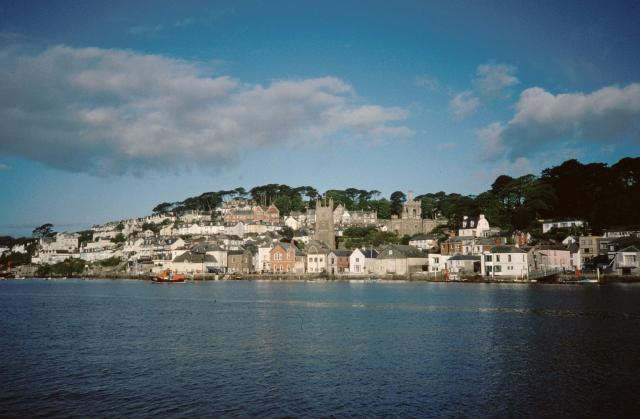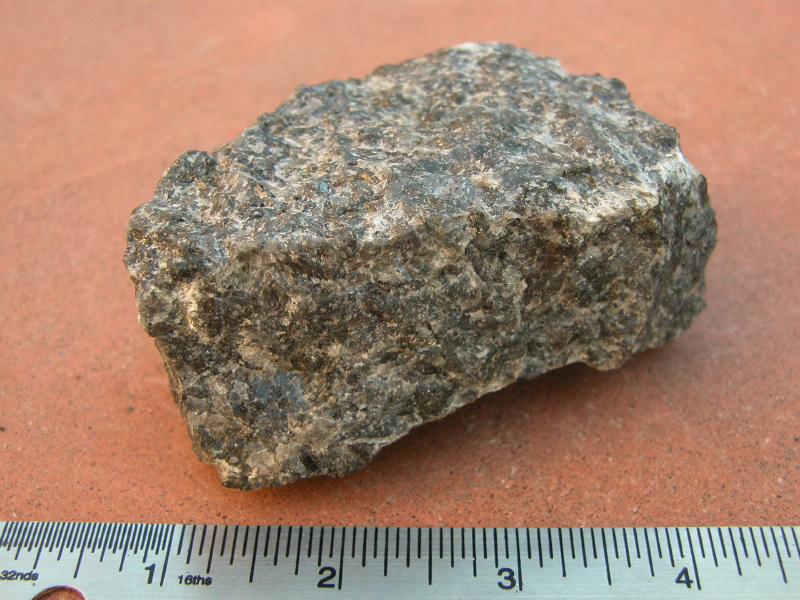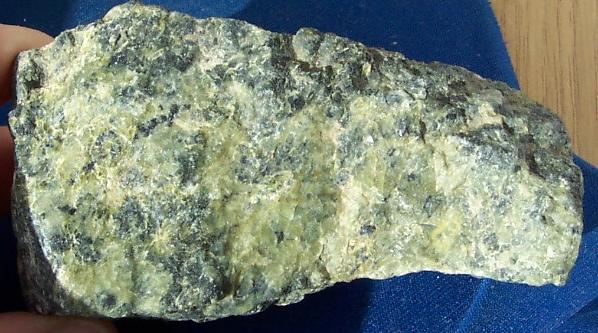|
Porthallow
Porthallow ( kw, Porthalow) is a small fishing village on the east coast of The Lizard peninsula to the south of the Helford River, in Cornwall, England. It lies in St Keverne parish, north of St Keverne village. One road runs through the village, and there is public house, the Five Pilchards, named for the pilchard fishery. Porthallow is at the midpoint of the South West Coast Path and is within the Cornwall Area of Outstanding Natural Beauty (AONB). Geology The geology of the Lizard is complex and of great interest to geologists. The peninsula can be divided into two areas, with an irregular boundary running between Polurrian Cove on the west (Mount's Bay) coast and Porthallow in the east. To the north is the Meneage and to the south the Lizard District, with the geology differing greatly between the two districts. The coast to the north of the village is designated as a Geological Conservation Review (GCR) site, and to the north and south is designated as a Site of Specia ... [...More Info...] [...Related Items...] OR: [Wikipedia] [Google] [Baidu] |
St Keverne
St Keverne ( kw, Pluw Aghevran (parish), Lannaghevran (village)) is a civil parish and village on The Lizard in Cornwall, England, United Kingdom. In addition to the parish, an electoral ward exists called ''St Keverne and Meneage''. This stretches to the western Lizard coast at Gunwalloe. The population of the ward at the 2011 election was 5,220. The Cornish rebellion of 1497 started in St Keverne. The leader of the rebellion Michael An Gof ("the smith" in Cornish) was a blacksmith from St Keverne and is commemorated by a statue in the village. Before his execution, An Gof said that he should have "a name perpetual and a fame permanent and immortal". In 1997 a 500th anniversary march, "Keskerdh Kernow 500", celebrating the rebellion, retraced the route of the original march from St Keverne, via Guildford to London. Geography The parish is a large one. It includes some 10 miles of coast from Nare Point at the mouth of the Helford River to Kennack Sands, and the Manacles ... [...More Info...] [...Related Items...] OR: [Wikipedia] [Google] [Baidu] |
South West Coast Path
The South West Coast Path is England's longest waymarked long-distance footpath and a National Trail. It stretches for , running from Minehead in Somerset, along the coasts of Devon and Cornwall, to Poole Harbour in Dorset. Because it rises and falls with every river mouth, it is also one of the more challenging trails. The total height climbed has been calculated to be 114,931 ft (35,031 m), almost four times the height of Mount Everest. It has been voted 'Britain's Best Walking route' twice in a row by readers of The Ramblers' ''Walk'' magazine, and regularly features in lists of the world's best walks. The final section of the path was designated as a National Trail in 1978. Many of the landscapes which the South West Coast Path crosses have special status, either as a national park or one of the heritage coasts. The path passes through two World Heritage Sites: the Dorset and East Devon Coast, known as the Jurassic Coast, was designated in 2001, and the Cornwal ... [...More Info...] [...Related Items...] OR: [Wikipedia] [Google] [Baidu] |
Cornwall Council
Cornwall Council ( kw, Konsel Kernow) is the unitary authority for Cornwall in the United Kingdom, not including the Isles of Scilly, which has its own unitary council. The council, and its predecessor Cornwall County Council, has a tradition of large groups of independent councillors, having been controlled by independents in the 1970s and 1980s. Since the 2021 elections, it has been under the control of the Conservative Party. Cornwall Council provides a wide range of services to the approximately half a million people who live in Cornwall. In 2014 it had an annual budget of more than £1 billion and was the biggest employer in Cornwall with a staff of 12,429 salaried workers. It is responsible for services including: schools, social services, rubbish collection, roads, planning and more. History Establishment of the unitary authority On 5 December 2007, the Government confirmed that Cornwall was one of five councils that would move to unitary status. This was enacted b ... [...More Info...] [...Related Items...] OR: [Wikipedia] [Google] [Baidu] |
Conglomerate (geology)
Conglomerate () is a clastic sedimentary rock that is composed of a substantial fraction of rounded to subangular gravel-size clasts. A conglomerate typically contains a matrix of finer-grained sediments, such as sand, silt, or clay, which fills the interstices between the clasts. The clasts and matrix are typically cemented by calcium carbonate, iron oxide, silica, or hardened clay. Conglomerates form by the consolidation and lithification of gravel. They can be found in sedimentary rock sequences of all ages but probably make up less than 1 percent by weight of all sedimentary rocks. In terms of origin and depositional mechanisms, they are closely related to sandstones and exhibit many of the same types of sedimentary structures, e.g., tabular and trough cross-bedding and graded bedding.Boggs, S. (2006) ''Principles of Sedimentology and Stratigraphy.'', 2nd ed. Prentice Hall, New York. 662 pp. Friedman, G.M. (2003) ''Classification of sediments and sedimentary rocks ... [...More Info...] [...Related Items...] OR: [Wikipedia] [Google] [Baidu] |
Fowey
Fowey ( ; kw, Fowydh, meaning 'Beech Trees') is a port town and civil parish at the mouth of the River Fowey in south Cornwall, England, United Kingdom. The town has been in existence since well before the Norman invasion, with the local church first established some time in the 7th century; the estuary of the River Fowey forms a natural harbour which enabled the town to become an important trading centre. Privateers also made use of the sheltered harbourage. The Lostwithiel and Fowey Railway brought China clay here for export. History Early history The Domesday Book survey at the end of the 11th century records manors at Penventinue and Trenant, and a priory was soon established nearby at Tywardreath. the prior granted a charter to people living in Fowey itself. This medieval town ran from a north gate near Boddinick Passage to a south gate at what is now Lostwithiel Street; the town extended a little way up the hillside and was bounded on the other side by the river whe ... [...More Info...] [...Related Items...] OR: [Wikipedia] [Google] [Baidu] |
Duchy Of Cornwall
The Duchy of Cornwall ( kw, Duketh Kernow) is one of two royal duchies in England, the other being the Duchy of Lancaster. The eldest son of the reigning British monarch obtains possession of the duchy and the title of 'Duke of Cornwall' at birth or when his parent succeeds to the throne, but may not sell assets for personal benefit and has limited rights and income while a minor. The current duke is Prince William. When the monarch has no male children, the rights and responsibilities of the duchy revert to the Crown. The Duchy Council, called the Prince's Council, meets twice a year and is chaired by the duke. The Prince's Council is a non-executive body which provides advice to the duke with regard to the management of the duchy. The duchy also exercises certain legal rights and privileges across Cornwall and the Isles of Scilly, including some that elsewhere in England belong to the Crown. The duke appoints a number of officials in the county and acts as the port auth ... [...More Info...] [...Related Items...] OR: [Wikipedia] [Google] [Baidu] |
Beaulieu Abbey
Beaulieu Abbey, , was a Cistercian abbey in Hampshire, England. It was founded in 1203–1204 by King John and (uniquely in Britain) populated by 30 monks sent from the abbey of Cîteaux in France, the mother house of the Cistercian order. The Medieval Latin name of the monastery was ''Bellus Locus Regis'' ("The beautiful place of the king"') or ''monasterium Belli loci Regis''. Other spellings of the English name which occur historically are Bewley (16th century) and Beaulie (17th century). History Foundation The first Abbot of Beaulieu was Hugh, who stood high in the king's favour, often served in important diplomatic missions and was later to become Bishop of Carlisle. The king granted the new abbey a rich endowment, including numerous manors spread across southern England (particularly in Berkshire), land in the New Forest, corn, large amounts of money, building materials, 120 cows, 12 bulls, a golden chalice, and an annual tun of wine. John's son and successor, King ... [...More Info...] [...Related Items...] OR: [Wikipedia] [Google] [Baidu] |
Institute Of Cornish Studies
The Institute of Cornish Studies (, ICS) is a research institute in west Cornwall, England, United Kingdom, affiliated with the University of Exeter. Formerly at Pool, near Redruth, then in Truro, it is now on the Penryn Campus near Penryn, Cornwall. History The Institute of Cornish Studies (ICS) was founded in 1971. Originally based in Pool, halfway between Camborne and Redruth, its first director was Charles Thomas who led the institute with Oliver Padel and Myrna Combellack in research into archaeology, Cornish place-names and Cornish medieval dramas. After Thomas retired, Philip Payton took over as director from 1991 and changed the direction of research towards contemporary matters, publishing a collection of essays on modern Cornwall in 1993 entitled ''Cornwall Since the War''. In 1994 the institute moved to Truro, at the university's Department of Lifelong Learning. In 2000 Garry Tregidga and Bernard Deacon joined the institute, which moved again in 2004 to the ... [...More Info...] [...Related Items...] OR: [Wikipedia] [Google] [Baidu] |
Schist
Schist ( ) is a medium-grained metamorphic rock showing pronounced schistosity. This means that the rock is composed of mineral grains easily seen with a low-power hand lens, oriented in such a way that the rock is easily split into thin flakes or plates. This texture reflects a high content of platy minerals, such as micas, talc, chlorite, or graphite. These are often interleaved with more granular minerals, such as feldspar or quartz. Schist typically forms during regional metamorphism accompanying the process of mountain building (orogeny) and usually reflects a medium grade of metamorphism. Schist can form from many different kinds of rocks, including sedimentary rocks such as mudstones and igneous rocks such as tuffs. Schist metamorphosed from mudstone is particularly common and is often very rich in mica (a ''mica schist''). Where the type of the original rock (the protolith) is discernible, the schist is usually given a name reflecting its protolith, such as ''schis ... [...More Info...] [...Related Items...] OR: [Wikipedia] [Google] [Baidu] |
Gabbro
Gabbro () is a phaneritic (coarse-grained), mafic intrusive igneous rock formed from the slow cooling of magnesium-rich and iron-rich magma into a holocrystalline mass deep beneath the Earth's surface. Slow-cooling, coarse-grained gabbro is chemically equivalent to rapid-cooling, fine-grained basalt. Much of the Earth's oceanic crust is made of gabbro, formed at mid-ocean ridges. Gabbro is also found as plutons associated with continental volcanism. Due to its variant nature, the term ''gabbro'' may be applied loosely to a wide range of intrusive rocks, many of which are merely "gabbroic". By rough analogy, gabbro is to basalt as granite is to rhyolite. Etymology The term "gabbro" was used in the 1760s to name a set of rock types that were found in the ophiolites of the Apennine Mountains in Italy. It was named after Gabbro, a hamlet near Rosignano Marittimo in Tuscany. Then, in 1809, the German geologist Christian Leopold von Buch used the term more restrictively in ... [...More Info...] [...Related Items...] OR: [Wikipedia] [Google] [Baidu] |
Serpentine Group
Serpentine subgroup (part of the kaolinite-serpentine group in the category of phyllosilicates) are greenish, brownish, or spotted minerals commonly found in serpentinite. They are used as a source of magnesium and asbestos, and as decorative stone. The name comes from the greenish colour and smooth or scaly appearance from the Latin , meaning "serpent rock". Serpentine subgroup is a set of common rock-forming hydrous magnesium iron phyllosilicate () minerals, resulting from the metamorphism of the minerals that are contained in mafic to ultramafic rocks. They may contain minor amounts of other elements including chromium, manganese, cobalt or nickel. In mineralogy and gemology, serpentine may refer to any of the 20 varieties belonging to the serpentine subgroup. Owing to admixture, these varieties are not always easy to individualize, and distinctions are not usually made. There are three important mineral polymorphs of serpentine: antigorite, lizardite and chrysotile. S ... [...More Info...] [...Related Items...] OR: [Wikipedia] [Google] [Baidu] |






